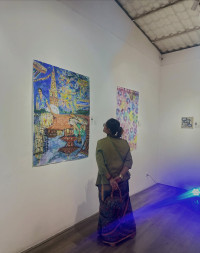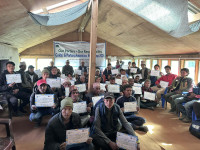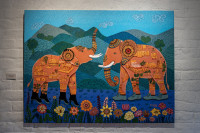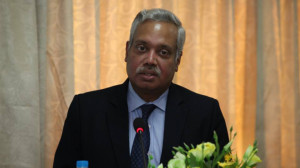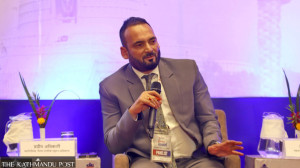National
Experts advocate for affordable and easily accessible assistive technology
They point out the need for greater investment, enhanced local production, and policy reforms to promote disability-inclusive solutions in Nepal.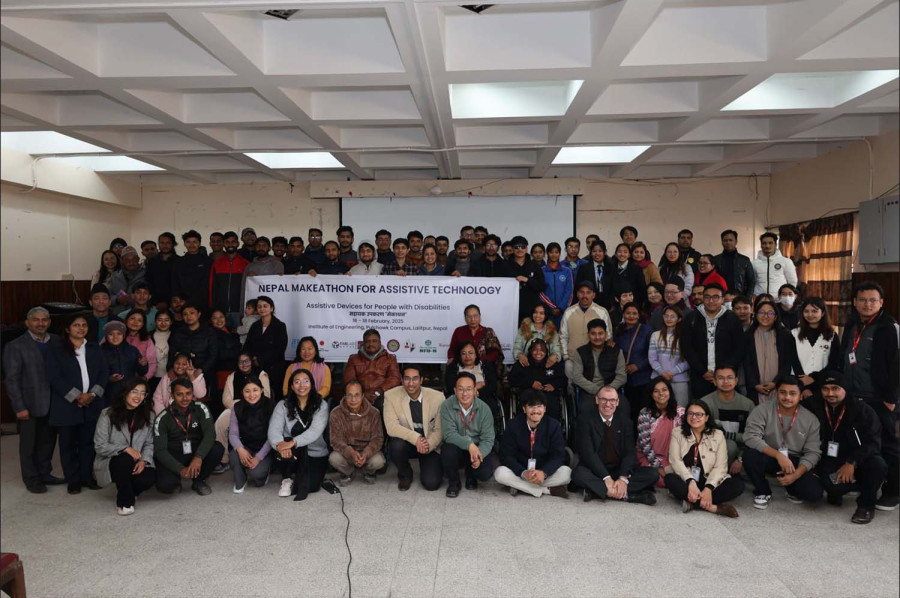
Post Report
Mendrel Sherab Seldon, a 12-year-old with mobility issues, had great difficulty writing since a young age. Because of it, she had a hard time at school. But in the Assistive Technology Makeathon held in Thimpu, Bhutan last year, she got access to assistive devices—finger grip and pencil holders—thanks to which, she can now write with greater ease.
In the second iteration of the Makeathon, Seldon was given a better developed assistive device as per the feedback and results from her year-long use.
This is an example of how even small interventions like assistive devices can make a transformative impact in the lives of people with disabilities.
Assistive technology are products, equipment, and systems designed to enhance learning, working, and daily living for people with disabilities by improving their functional abilities.
Three-dimensional (3D) printing, a manufacturing process to create physical objects from a digital design, helps create assistive technology devices.
After successful results from two Makeathon events in Bhutan, the Asian Development Bank (ADB), with support from the Japan Fund for Prosperous and Resilient Asia and the Pacific (JFPR), organised a three-day Makeathon at the Institute of Engineering, Pulchowk Campus, from February 16–18.
The event brought together designers, engineers, occupational therapists, and persons with disabilities—termed ‘need knowers’—to develop and refine assistive devices for inclusive education and skills development.
Like for Mendrel, 3D-printed pen holders, spoon holders, foot supporters, and other assistive devices were made for eleven people with disabilities in Nepal.
“Our aim is to raise awareness in Nepal and South Asia about the potential of 3D-printed assistive devices,” said Naoki Hamanaka, founder of FabLab Shinagawa. “With the right resources, these devices can be very affordable and easily accessible.”
According to Rudi Van Dael, principal social sector specialist at the ADB Nepal Resident Mission, nine development partners are supporting the Ministry of Education, Science, and Technology (MOEST) to implement the ‘school education sector program’, which includes specific initiatives for children with disabilities.
Under the programme, schools are supported to screen children through medical professionals, and based on these screenings, assistive technology is provided by local governments. MOEST has set a target to increase enrollment of children with disabilities, and ADB’s support to this programme will continue until at least 2027.
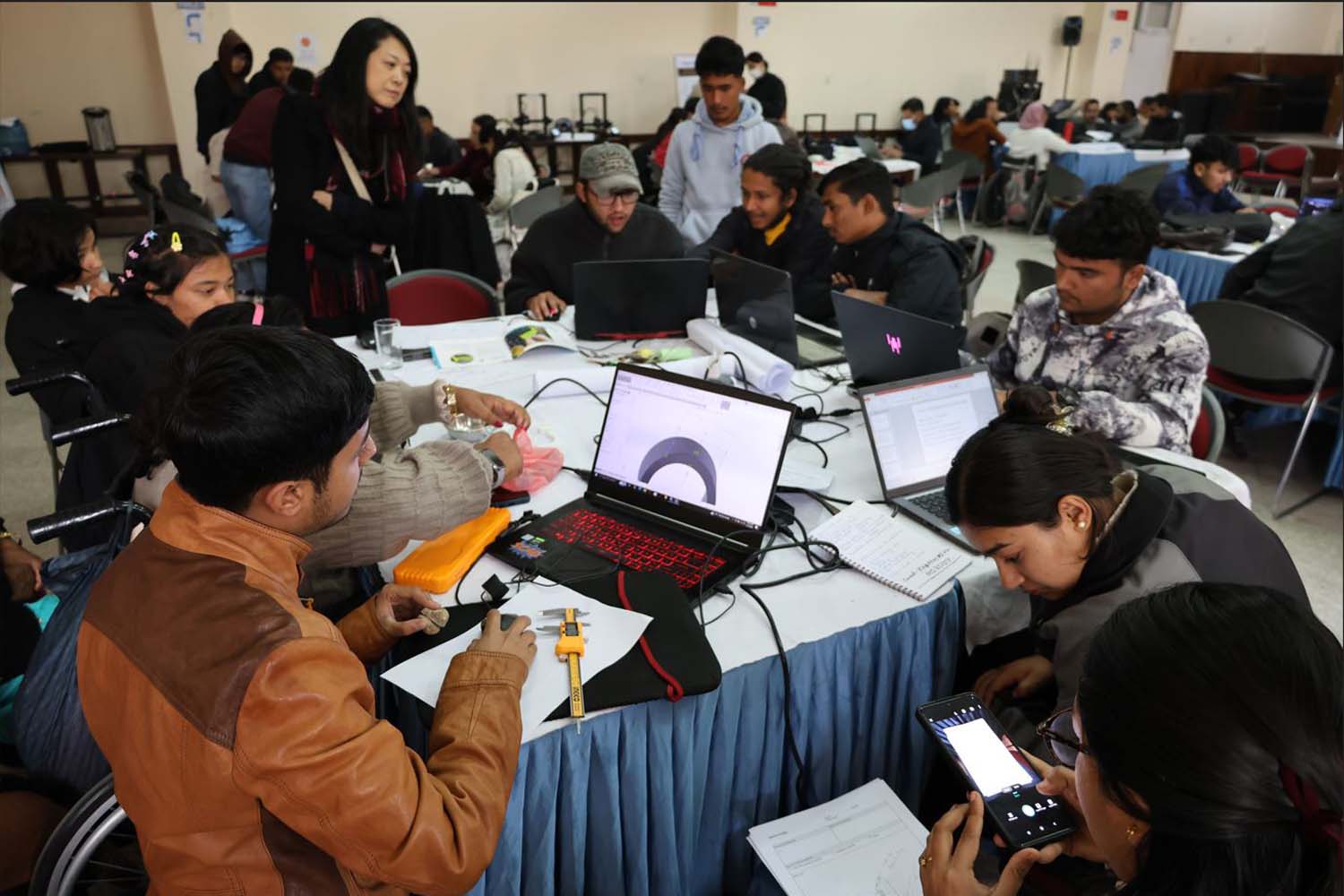
According to Naoki, although the technology is not yet widespread in Japan, some hospitals have already started using 3D-printed assistive tools for patients.
“From our experiences in Japan, Bhutan, and Nepal, we believe that setting up maker spaces for assistive devices requires a combination of key experts, including engineers, 3D designers, occupational therapists, and technicians,” said Ryotaro Hayashi, senior social sector economist at ADB.
Infrastructure like 3D printers and dedicated workspaces are critical requirements too.
But scaling up the production of assistive technology can be challenging in South Asia including Nepal, says Sonoko Hayashi, director of FabLab Shinagawa and an occupational therapist.
“Occupational therapists seem to be lacking in this region,” she said. “Bhutan has very few, and Nepal has only eight. Developing occupational therapy is crucial because therapists must collaborate with designers to refine existing assistive devices into more comfortable, accessible, and visually appealing solutions for people with disabilities.”
Gender and Project Implementation Support Specialist at ADB Sangita Budhathoki acknowledges that the idea of running maker spaces is challenging.
“We are seeing increased engagement from local governments, medical institutions, and technical institutes,” Budhathoki said. “With proper collaboration between the government, local authorities, and stakeholders, scaling this initiative is achievable.”
The Makeathon also featured a policy dialogue on ‘Assistive Technology (AT) in Nepal,’ featuring panelists from the Ministry of Women, Children, and Senior Citizens, the Ministry of Health and Population, the National Federation for Persons with Disabilities Nepal, and the Nepal Disabled Women Association.
Panelists advocated for greater investment, enhanced local production, and policy reforms to promote disability-inclusive solutions in Nepal.
Experts say a Makeathon can be an effective tool to generate attention for innovative service delivery.
“Instead of just centrally procuring standard assistive tools such as crutches and wheelchairs—which often go unused—this approach allows for tailor-made, 3D-printed devices at a relatively low cost,” added Dael.
Experts further add that much can be learned from countries in Europe, North America, China, and Northeast Asia that have made greater advancements in assistive technology.
“We hope stakeholders recognise that Nepal has the in-country capacity to design and manufacture these technologies and will work to expand these services beyond Kathmandu,” Dael said.




 8.12°C Kathmandu
8.12°C Kathmandu

